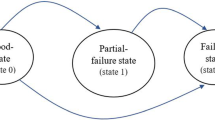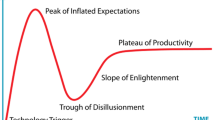Abstract
Often engineered systems entail randomness as a function of spatial (or temporal) variables. The random field can be found in the form of geometry, material property, and/or loading in engineering products and processes. In some applications, consideration of the random field is a key to accurately predict variability in system performances. However, existing methods for random field modeling are limited for practical use because they require sufficient field data. This paper thus proposes a new random field modeling method using a Bayesian Copula that facilitates the random field modeling with insufficient field data and applies this method for engineering probability analysis and robust design optimization. The proposed method is composed of three key ideas: (i) determining the marginal distribution of random field realizations at each measurement location, (ii) determining optimal Copulas to model statistical dependence of the field realizations at different measurement locations, and (iii) modeling a joint probability density function of the random field. A mathematical problem was first employed for the purpose of demonstrating the accuracy of the random field modeling with insufficient field data. The second case study deals with the assembly process of a two-door refrigerator that challenges predicting the door assembly tolerance and minimizing the tolerance by designing the random field and parameter variables in the assembly process with insufficient random field data. It is concluded that the proposed random field modeling can be used to successfully conduct the probability analysis and robust design optimization with insufficient random field data.













Similar content being viewed by others
Abbreviations
- Θ :
-
random field
- μ ν :
-
mean and variation of the random field
- ϕ :
-
signature of the random field
- Σ :
-
covariance matrix
- Δ :
-
distribution parameter vector
- d :
-
design vector of random parameter variables
- γ :
-
design vector of random field variables
- α:
-
coefficient of the random field signature
- λ :
-
eigenvalue of the covariance matrix
- τ :
-
Kendall’s tau
- C c :
-
cumulative distribution function and probability density function of the Copula
- D :
-
bivariate data
- F f :
-
cumulative distribution function and probability density function
- M :
-
number of random fields
- m n :
-
number of random field data and number of measurement locations
- Q :
-
number of test Copulas
- V :
-
random field variable
- x :
-
measurement location
- MD :
-
number of random field design variables
- ND :
-
number of design variables
- NC :
-
number of probabilistic constraints
- NP :
-
number of random parameters
References
Basudhar A, Missoum S (2009) A sampling-based approach for probabilistic design with random fields. Comput Methods Appl Mech Eng 198(47–48):3647–3655
Berg, BA (2004) “Markov Chain Monte Carlo Simulations and Their Statistical Analysis”, World Scientific Publishing Co. Pte. Ltd. ISBN, 981-238-935-0
Berkooz, G, Holmes, P, and Lumley, JL (1996) “Turbulence, Coherent Structuress, Dynamical Systems and Symmetry.” Cambridge University Press: Cambridge Monographs on Mechanics
Bhushan RK, Kumar S, Das S (2012) GA approach for optimization of surface roughness parameters in machining of Al alloy SiC particle composite. J Mater Eng Perform 21(8):1676–1686
Boone EL, Ye K, Smith EP (2005) Assessment of two approximation methods for computing posterior model probabilities. Comput Stat Data Anal 48(2):221–234
Chen X, Fan Y (2005) Pseudo-likelihood ratio tests for semiparametric multivariate copula model selection. La Rev Can Stat 33(3):389–414
Chen S, Chen W, Lee S (2010) Level Set based robust shape and topology optimization under random field uncertainties. Struct Multidiscip Optim 41(4):507–524
Choi SK, Canfield RA, Grandhi RV (2006) Estimation of structural reliability for gaussian random fields. Struct Infrastruct Eng 2:161–173
Der Kiureghian A, Ke JB (1988) The stochastic finite element method in structural reliability. Probab Eng Mech 3(2):83–91
Fermanian JD (2005) Goodness-of-Fit tests for copulas. J Multivar Anal 95:119–152
Fukunaga K (1990) Introduction to statistical recognition. Academic, NewYork
Guan X, Giffin A, Jha R, Liu Y (2012) Maximum relative entropy-based probabilistic inference in fatigue crack damage prognostics. Probab Eng Mech 29:157–166
Haran, M (2012) “Gaussian random field models for spatial data”, Markov Chain Monte Carlo Handbook, CRC Press
Hu C, Youn BD (2009) Adaptive-sparse polynomial chaos expansion for reliability analysis and design of complex engineering systems. Struct Multidiscip Optim 43(3):419–442
Huang B, Du X (2006) Uncertainty analysis by dimension reduction integration and saddlepoint approximations. J Mech Des 128:26–33
Huard D, Evin G, Favre AC (2006) Bayesian copula selection. Comput Stat Data Anal 51(2):809–822
Jaynes ET, Bretthorst GL (2003) Probability theory: the logic of science. Cambridge University Press, Cambridge
Kullback S, Leibler RA (1951) On information and sufficiency. Ann Math Stat 22(1):79–86
Lee SH, Chen W (2009) A comparative study of uncertainty propagation methods for black-box type problems. Struct Multidiscip Optim 37(3):239–253
Li C, Der Kiureghian A (1993) Optimal discretization of random fields. J Eng Mech 119(6):1136–1154
Liu WK, Belytschko T, Mani A (1986) Random field finite elements. Int J Numer Methods Eng 23(10):1831–1845
Missoum S (2008) Probabilistic optimal design in the presence of random fields. Struct Multidiscip Optim 35:523–530
Orfanidis SJ (1996) Introduction to signal processing. Prentice-Hall, Englewood
Panchenko V (2005) Goodness-of-fit test for copulas. Phys A: Stat Mech Appl 355(1):176–182
Rabitz H, Alis OF (1999) General foundations of high-dimensional model representations. J Math Chem 25:197–233
Rabitz H, Alis OF, Shorter J, Shim K (1999) Efficient input–output model representations. Comput Phys Commun 117:11–20
Rajaee M, Karlsson SKF, Sirorich L (1994) Low-dimensional description of free-shear-flow coherent structures and their dynamical behavior. J Fluid Mech 258:1–29
Roser BN (1999) An introduction to copulas. Springer, New York
Sklar A (1959) Fonctions de répartition à n dimensions et leurs marges. Publ Inst Stat’Univer Paris 8:229–231
Sudret, B and Der Kiureghian A (2000) “Stochastic Finite Element Methods and Reliability: A State-Of-The-Art Report,” Technical Report UCB/SEMM-2000/08, Department of Civil & Environmental Engineering, University of California, Berkeley, CA
Tamura Y, Suganuma S, Kikuchi H, Hibi K (1999) Proper orthogonal decomposition of random wind pressure field. J Fluids Struct 13:1069–1095
Turk M, Pentland A (1991) Eigenfaces for recognition. J Cogn Neurosci 3(1):71–86
Vanmarcke EH, Grigoriu M (1983) Stochastic finite element analysis of simple beams. J Eng Mech, ASCE 109(5):1203–1214
Wang C, Blei DM (2013) Variational inference in nonconjugate models. J Mach Learn Res 14(1):1005–1031
Wang H, Suriano S, Zhou L, Hu SJ (2009) High-definition metrology based spatial variation pattern analysis for machining process monitoring and diagnosis. In: Proceedings of ASME 2009 International Manufacturing Science and Engineering Conference, MSEC2009-84154, West Lafayette, Indiana, USA
Xi Z, Youn BD, Hu C (2010) Random field characterization considering statistical dependence for probability analysis and design. J Mech Des 132(10):101008(12)
Xu H, Rahman S (2004) A generalized dimension-reduction method for multidimensional integration in stochastic mechanics. Int J Numer Method Eng 61:1992–2019
Yin X, Lee S, Chen W, Liu WK (2009) Efficient random field uncertainty propagation in design using multiscale analysis. J Mech Des 131(2):021006(10)
Youn BD, Xi Z (2009) Reliability-based robust design optimization using the eigenvector dimension reduction (EDR) method. Struct Multidiscip Optim 37(5):475–492
Youn BD, Choi KK, Yi K (2005) Performance moment integration (PMI) method for quality assessment in reliability-based robust design optimization. Mech Based Des Struct Mach 33:185–213
Zhan Z, Fu Y, Yang R-J, Xi Z, Shi L (2012) A Bayesian inference based model interpolation and extrapolation. SAE Int J Mater Manuf 5(2):357–364
Zhu J, Xing EP (2009) Maximum entropy discrimination markov networks. J Mach Learn Res 10:2531–2569
Acknowledgments
Research was supported by the Faculty Research Initiation and Seed Grant at University of Michigan Dearborn, by the Basic Research Project of Korea Institute of Machinery and Materials which is originally supported by Korea Research Council for Industrial Science & Technology, by the Basic Science Research Program through the National Research Foundation of Korea (NRF) funded by the Ministry of Science, ICT and Future Planning (2013R1A2A2A01068627), by the Brain Korea 21 Plus Project in 2013, and by the Institute of Advanced Machinery and Design at Seoul National University (SNU-IAMD). In addition, the authors appreciate Dr. Hui Wang at University of Michigan – Ann Arbor for providing the random field realization of a V-8 engine head.
Author information
Authors and Affiliations
Corresponding author
Rights and permissions
About this article
Cite this article
Xi, Z., Youn, B.D., Jung, B.C. et al. Random field modeling with insufficient field data for probability analysis and design. Struct Multidisc Optim 51, 599–611 (2015). https://doi.org/10.1007/s00158-014-1165-0
Received:
Revised:
Accepted:
Published:
Issue Date:
DOI: https://doi.org/10.1007/s00158-014-1165-0




